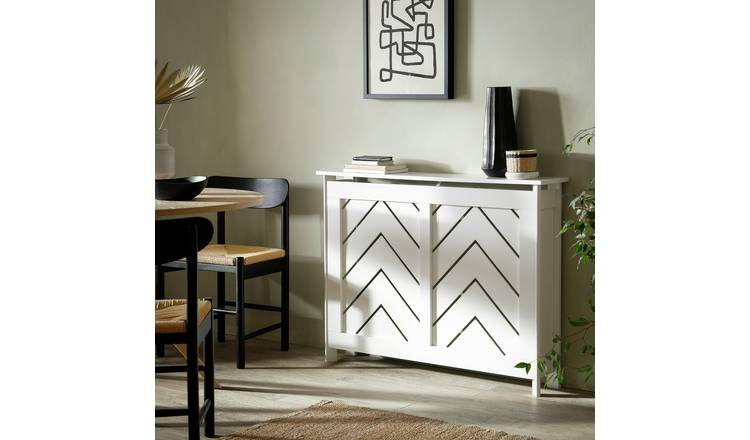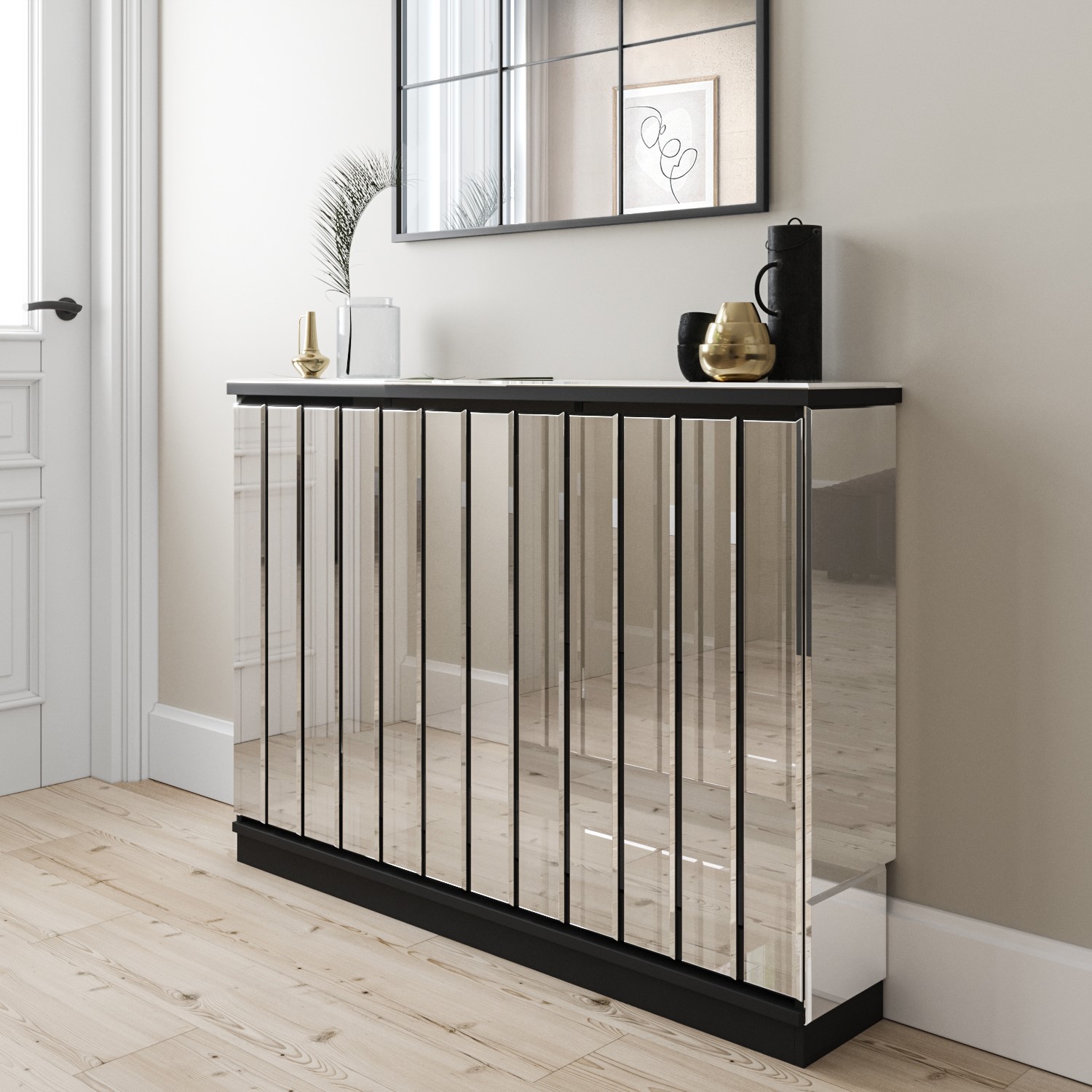Radiator Cover Concepts to Boost Your Interior Design
Radiator Cover Concepts to Boost Your Interior Design
Blog Article
Radiator Covers: Recognizing Products, Layouts, and Advantages
Radiator covers offer both aesthetic and functional functions within a home, providing a variety of materials such as mdf, metal, and hardwood to suit various design preferences. As styles evolveâEUR" from traditional to contemporaryâEUR" these covers not just boost the aesthetic allure of an area however also add to safety and energy performance. Selecting the best radiator cover involves understanding the subtleties of products, styles, and their associated benefits. This expedition increases important concerns about just how these aspects incorporate right into your living environment and what considerations should direct your selection procedure.
Kinds of Materials


Wood covers, usually crafted from hardwoods such as oak or maple, supply a classic, warm look that matches traditional insides. Their resilience and ability to be tarnished or repainted add to their adaptability. Steel covers, typically made from steel or light weight aluminum, are preferred for their toughness and contemporary appearance, often including streamlined lines that improve modern spaces.
MDF, a made timber product, is preferred for its cost-effectiveness and convenience of personalization. It can be repainted or ended up to match existing decor while using a smooth surface. Plastic covers, while much less common, are immune and lightweight to wetness, making them appropriate for humid atmospheres.
Inevitably, the option of product for a radiator cover need to line up with the house owner's style preferences, useful requirements, and the specific setting where the cover will certainly be mounted. Each product supplies a distinct personality, making sure that there is an option to match every taste and setting.
Popular Design Styles
Emphasizing visual allure, preferred layout styles for radiator covers show an array of preferences and interior decoration trends. Standard styles usually feature complex woodwork and luxuriant outlining, making them appropriate for traditional or vintage-inspired interiors. These covers normally include sculpted elements, giving a cozy and inviting feeling to any area.
On the other hand, modern layouts concentrate on minimalist aesthetics, defined by tidy lines and downplayed style. Materials such as metal or smooth timber with a smooth coating are generally made use of, permitting these covers to mix seamlessly right into contemporary rooms. Industrial styles, on the other hand, welcome raw materials like exposed steel and concrete, adding a vibrant statement to loft space or metropolitan settings.
For those looking for an unique touch, bespoke styles supply modification alternatives that deal with individual preferences, allowing home owners to select shades, patterns, and materials that match their style. Furthermore, farmhouse-style covers integrate rustic aspects, including distressed wood and straightforward forms that evoke a relaxing, nation charm.
Advantages of Radiator Covers
Radiator covers not only boost the aesthetic allure of a room but additionally offer several functional advantages that make them a rewarding addition to any kind of home. One of the main benefits is safety, especially in households with children or animals. Covers reduce the risk of burns from hot radiator surface areas, making certain a more secure environment.
Additionally, radiator covers can improve energy effectiveness. By guiding warm right into the space instead of permitting it to run away, they aid keep a consistent temperature, decreasing heating expenses in time. This is particularly valuable in older homes where radiator systems might be much less effective.
One more significant advantage is sound reduction. Radiators can often create unwanted noises during operation, and view it now covers can aid smother these sounds, adding to a much more serene living area. Radiator covers can be functional, providing added storage space or screen area, thus taking full advantage of the utility of often-overlooked locations.
Last but not least, they can secure radiators from dust and debris, which can prevent effectiveness and boost maintenance needs. With these combined advantages, radiator covers arise as a functional service for boosting both the performance and style of any kind of home atmosphere.
Installation Factors To Consider
Setting up radiator covers calls for cautious factor to consider to make sure both functionality and safety and security (Radiator cover). Examine the dimensions of your radiator and the surrounding room to ensure a correct fit. Precise dimensions are vital; an ill-fitting cover can block heat circulation or create safety and security dangers
Next, review the material of the cover. While timber offers aesthetic allure, metal alternatives may give better durability and warm resistance. Take into consideration the weight of the cover as well; much heavier covers might need extra assistance or reinforcements to prevent drooping or damage in time.
Air flow is an additional vital facet. Covers should feature ample airflow to stop getting too hot and maintain efficient heating. Try to find layouts with slats or perforations that allow warm to distribute without blockage.
In addition, guarantee that the cover is safely placed to avoid mishaps, specifically in homes with pet dogs or youngsters. Radiator cover. It's recommended to comply with the maker's installation guidelines carefully and, if needed, get in touch with a professional for complex installations
Maintenance and Treatment Tips
Proper maintenance of radiator covers is crucial for guaranteeing their longevity and optimal efficiency. For repainted or wood covers, consider a suitable polish or protective finishing to preserve their appearance.
Examine the this article covers regularly for signs of wear or damages, such as cracks or peeling off paint. Resolving these problems promptly can protect against additional wear and tear. Ensure that the covers are safely fastened and look for any type of loosened screws or fittings, as resonances from the radiator can loosen them in time.
In colder months, prevent placing heavy objects or ornamental items on top of the radiator covers, as this can impede warm circulation and cause unneeded stress to the framework. Think about seasonal upkeep by removing the covers for complete cleaning and assessment throughout warmer months when the heating system is inactive. Taking on these simple care ideas will certainly enhance the performance and visual appeal of your radiator covers, ensuring they serve their objective effectively for many years ahead.

Verdict
In recap, radiator covers offer as aesthetic and functional improvements to domestic rooms. The diverse series of materials, consisting of hardwoods, mdf, steel, and plastic, enables alignment with numerous design styles such as typical, contemporary, commercial, and farmhouse. The benefits of these covers expand beyond security and power effectiveness to consist of additional storage space and dust security. Mindful consideration of installment and maintenance more guarantees the long life and effectiveness of radiator covers in any type of home setting.
Radiator covers serve both useful and aesthetic objectives within a home, offering a variety of products such as mdf, hardwood, and metal to suit various style preferences. Selecting the ideal radiator cover entails understanding the nuances of materials, styles, and their connected advantages.Stressing aesthetic appeal, popular style styles for radiator covers mirror an array of preferences and interior design patterns.Radiator covers not just improve the visual allure of an area but also original site provide several useful benefits that make them a beneficial enhancement to any kind of home. Consider the weight of the cover as well; heavier covers may need added support or reinforcements to avoid sagging or damages over time.
Report this page